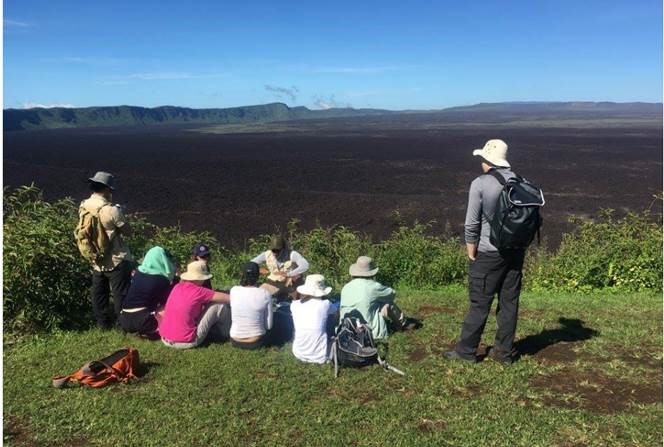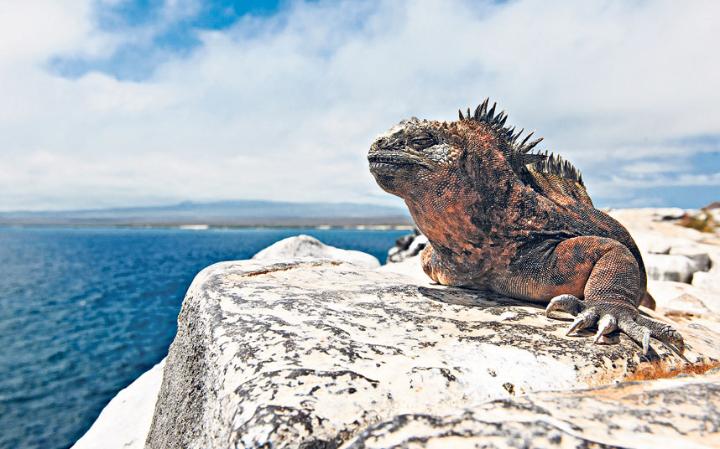Environmental Science: Galapagos Science Trip
March 11th - 18th, 2017Environmental Science students will get the opportunity to study Biology, observe species diversity and discuss evolution by natural selection in the actual area in the world that inspired Darwin to develop one of the most important theories in science.
The main objectives of this field trip are:
i. Observe and become familiar with the biodiversity in the Galapagos
ii. Learn about biodiversity and conservation in the Galapagos
iii. Be able to identify important plant and animal groups associated with each of the major ecosystems visited (forest, coastal areas, intertidal and sublittoral zones)
iv. Observe and identify evolutionary adaptions of the different species found in the different ecosystems visited.
v. Learn about the human impact in the Galapagos
Project Update
During the study break, Ray Bourgeois (Dean of Science, Medical Studies & Engineering) and Environmental Science teacher, Tonia De Bellis, brought eight second-year Environmental Science students to the Galapagos. They explored 4 islands: San Cristobal, Floreana, Isabela and Santa Cruz.
The Galápagos archipelago is an area of special importance to biologists as it occupies a unique position in the history of evolutionary studies, starting with Darwin’s ground breaking work and it continues to shape our understanding of evolutionary biology with the multitude of studies still being published today. On this trip we got to appreciate how the remoteness of these islands from the mainland provides the opportunity for speciation. Also, although each island may share a relatively similar geological history and comparable climate, organisms from each island experience subtly different environments, have distinct evolutionary histories and via natural selection has led to uniqueness in species assemblages we observed on the trip.
Students toured the Galapagos Science Center with Juan Pablo Muñoz, research director. Students visited the three main research lab areas: Terrestrial ecology, Marine ecology and Molecular/Microbiology. Students also visited three Galapagos giant tortoise conservation centers. At each center, they were given information on the story of these species in the Galapagos, how their number have plummeted after years of exploitation and how these centers are working together to bring their numbers back up.
Every day, students were learning about the geography, history, and biology of the area from their very experienced and knowledgeable guide Daniel.
During the trip students snorkeled with sea lions, green turtles and marine iguanas. They walked the beautiful trails alongside blue footed boobies, lava lizards, with frigate birds flying overhead. The Galapagos are quite known for their flora and fauna, but the landscapes are just as spectacular. Students hiked up a volcano, walked underground through lava tunnels, and visited Los Gemelos (twin volcanic craters on Santa Cruz Island). They also saw beautiful rocky coasts, and other magnificent coastal areas such the stunning Tintoreas bay (where they saw penguins!) and Tortuga beach (where they waded in the water with black tipped reef sharks!). 



